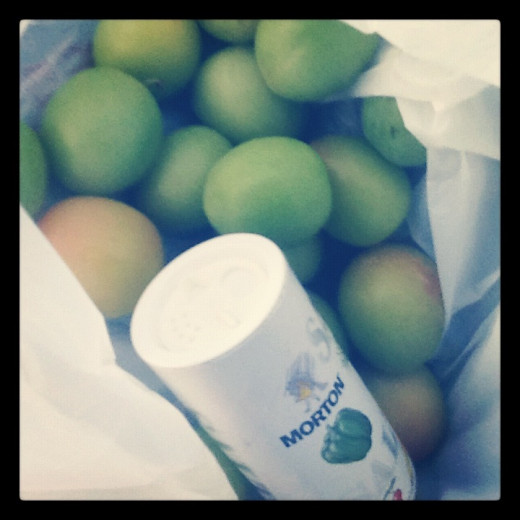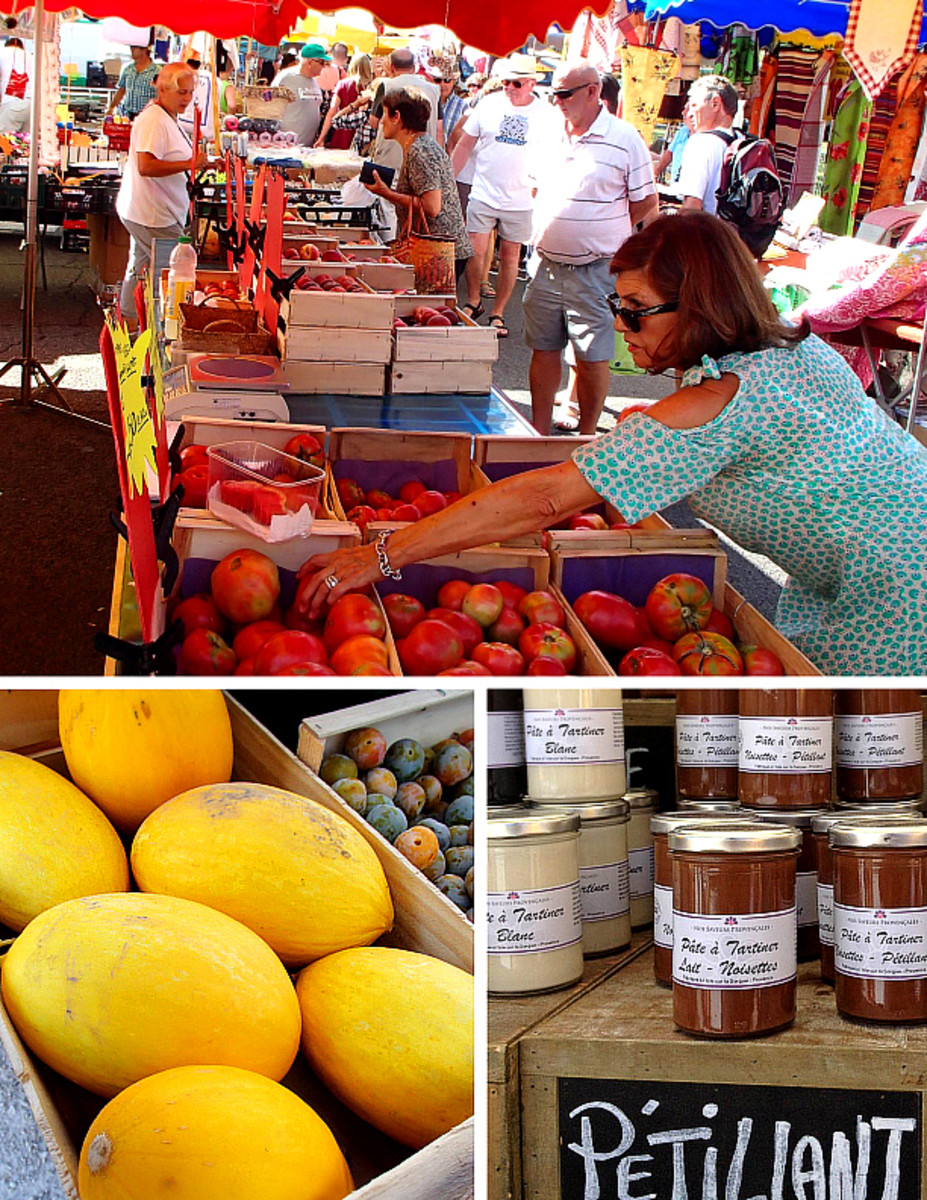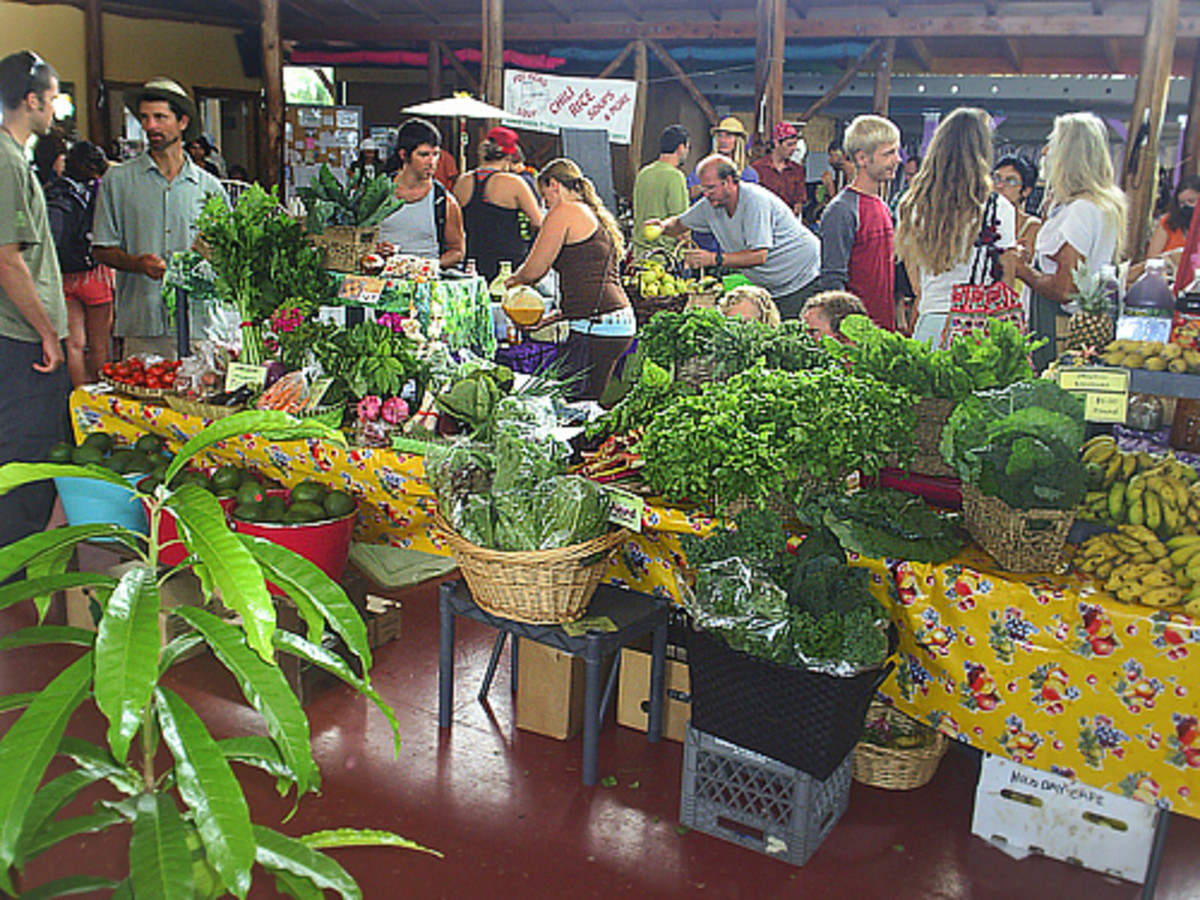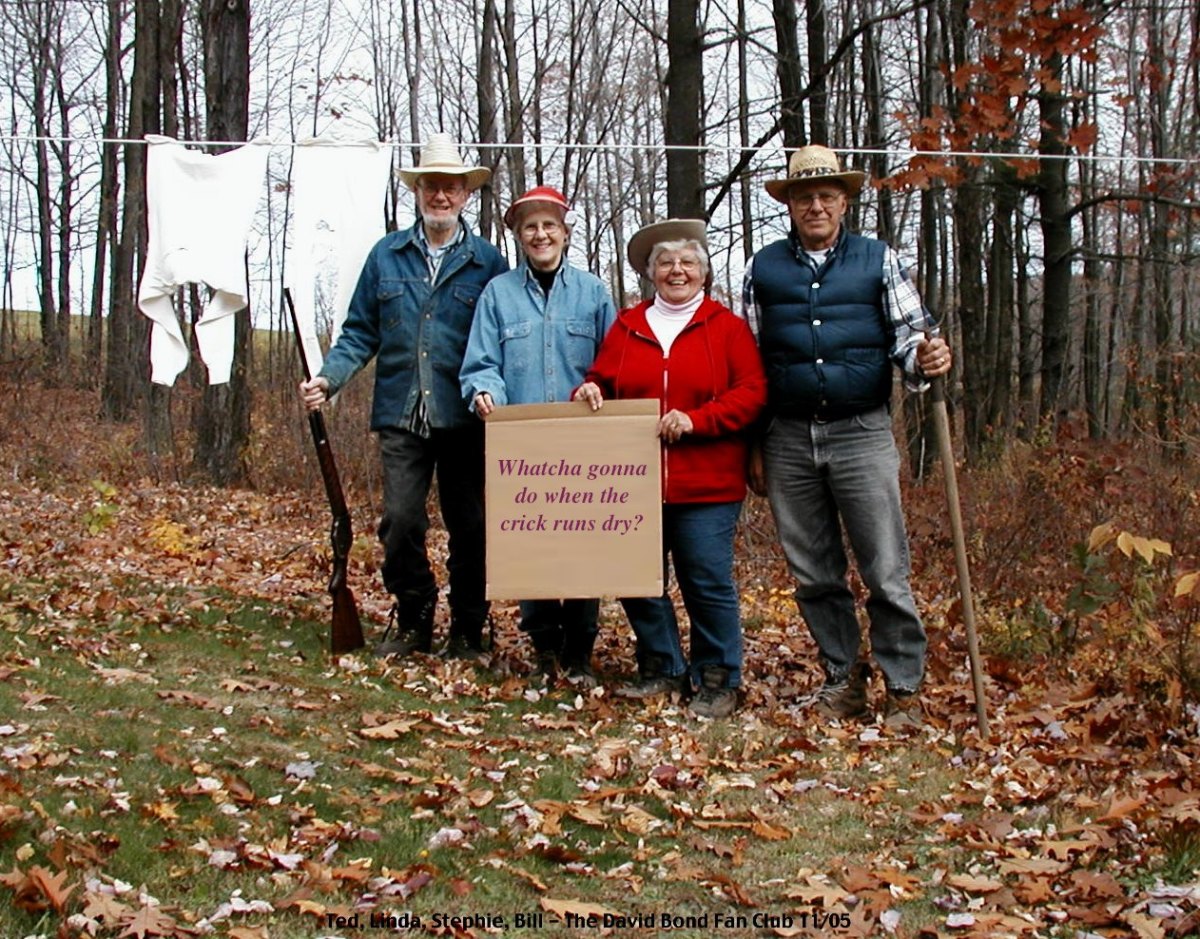Give Green Plums a Chance
© B. L. Bierley 2012

First Love
From the time I was old enough to have a recollection, summer was more than just time off from school or the point in my life when fresh vegetables, barbecued pork and homemade ice cream were weekly staples. Summer was a different world to me. And out of all the memorable things from my childhood summers, a distinct group sticks in my subconscious memory so well I can almost taste them: GREEN PLUMS!
Now, I don’t mean plums that turn from yellow to green when they’re ripe—I’ve often heard those exist. No, I’m talking about the tangy, acidic, un-ripened plums like the ones my cousins and I used to nearly come to blows over when it was a question about who would get the biggest one! Even just the smell of green plums held the power to make me happy.
In my hometown, a small rural gem in Alabama, there were always summery scents. Like fresh tilled soil that produced vegetables the old fashioned way, honeysuckle so thick you could get tangled in it if you weren’t paying attention where you walked, the breezes that wafted from the river carrying loamy hints of wet earth and the fishiness of a bait bucket left too long in the sunshine. None of those had the same effect as the smell of green plums. My sensory childhood fixated on the smell in my Aunt Nana’s kitchen cabinets—specifically the one where she hid the brown paper sack full of those delicious green babies and her carton of Morton’s Iodized salt! She wasn’t being selfish with them by hiding them, it was a wise move. If she’d just left them out on the counter, they’d have disappeared faster than a Popsicle lying on the porch in July! None of us could get enough!
The hiding place was genius. The plums were kept in the dark (which allowed them to soften up in their paper-sack incubator) on the middle shelf of the cabinet out of sight and, more importantly, out of reach from us kids. By the time I was eight I’d learned not only my aunt’s hiding spot but that a kitchen chair pushed up against the counter would give me access to the countertop! I knew better than to eat all of the green plums. I had manners after all. Sometimes I just wanted to smell them. The mixture of the astringent fruit and salt coupled with the wood of the cabinet created a magical scent that gave my olfactory nerves a jolt. Often it was enough just to open the door and breathe in the tantalizing aura those elusive summer delights would create in their hidey hole.
Still to this day just thinking about the aroma from the green plum cabinet makes my saliva glands kick into overdrive. But there’s a bittersweetness linked to that memory, too. Like many things from my childhood, I’ve been unable to capture that perfect blend of “perfume” ever since my aunt moved out of her old house over twenty years ago. Nowhere else was ever so familiar to me as that salty cabinet where those light-green jewels were kept. I remember the thrill of waiting for Aunt Nana to share her bounty and put a couple of her perfectly chosen green plums into my greedy little hands. A couple of teaspoons of salt in my palm, I’d lick the tight, outer flesh, dip the dampened spot into the salt and savor the pert, crispness and salty crunching goodness in every bite all the way down to the pit.
When it came to finding the best green plums, you couldn’t always get them in that all-perfect moment of readiness. Some members of my family craved the ones that were just about to turn red, the brief period when they still held their sour tang while at the same time being tender enough to eat. Not me. I wanted the greener, firmer individuals with more of that puckering sourness. Sometimes we would get plums when they were barely past their seed stage, their skin a bit darker and tougher. There was no way to predict if you’d get the good sour of pre-ripening or the bad sour of tooth-enamel stripping acidity. Did it stop me? No sir! Sometimes they’d be so green it’d set my teeth on edge worse than biting into an unripe persimmon. But I kept on eating as many as I could get, even at the risk of a bellyache. Eating green plums isn’t for the faint of heart.
Aunt Nana’s cabinet was practically impregnated with the pungent smell of green plums from years of summers of having them stored there, their brown paper sacks stretched to bursting like moneybags. They were more precious than gold to us being that they were a short-term commodity (we could only get them for a few short weeks between late May and early June, though once in a while we’d get lucky in July). By August the tangy little baby fruits would all be gone—ripened and eaten, rotting on the orchard ground, or canned beautifully in Mason jelly jars.
When summer ended, I’d sniff that special spot in Aunt Nana’s cabinet from August to April just to remember the happiness and the flavors that lulled me out of any frustration or bad mood. That was my happy place, my nirvana, a peaceful security during my adolescence when everything else often wasn’t. I’ve missed green plums, with their unique smell, so badly on certain occasions I’ve been tempted to call up the new owners of Aunt Nana’s old house just to ask if they still have the same cabinets. I wouldn’t do more than sniff, I swear (or ask if they ever plan to remodel—I’d be more than happy just to take that left one near the refrigerator off their hands). But I don’t call because I can’t be that rude or so pathetic as to covet a smell implanted in a kitchen cabinet nearly three decades ago. To me, the smell represents years long gone. I know I can’t turn back time.
The smell of that green plum cabinet was and continues to be one of my fondest memories from a time back when I childishly undervalued the things that would be most precious to me now: my favorite aunt’s ability to select the best basket of any fruit (ripe or green), my mama’s laughter while she visited with her older sister and teased her about nonsense the way only “Little Suzie” could, or the way my cousins and I would spend hours roaming the woods like fearless natives, letting our imaginations entertain us like nothing has since that time.
A Word to The Farmers
Even while I long for things long gone, people often remind me I can always appreciate the beauty of such simple things by continuing to indulge in the quirky, tasty habit of eating green plums, or create that same smell by storing them in a cabinet of my own. Unfortunately it’s a habit only a select group of southerners seems to claim affliction. I have to speak out now to the fruit farmers of America—in particular those of North East Alabama. Where can a gal find a green plum these days? When I was a girl (a scant quarter of a century or so ago) most local grocery stores in my hometown sold baskets of them alongside their other produce offerings. If it was a good fruit year, you could buy them by the pound at the curb market. That’s what you folks would call a farmer’s market. The reason we called it the curb market because it was a place in town that you could buy fresh fruits and vegetables where there were … what else … curbs! Even today if you call the curb market a farmer’s market they’ll look at you like you’re speaking Armenian.
Sorry, I got off on a tangent. Here’s what I was getting at: if I go to a farmer’s market where I live now and ask for green, un-ripened fruit of any variety folks look at me as if I’m speaking Armenian. What’s the big deal? I have good money, I promise! And I have a hankering for a sour blast from my past that’s so acute I get a jaw ache in anticipation. But no one is willing to thin their crop of future jelly fruits to help me out.
I read an article posted on the internet dated May 7, 2011 that shared the interesting factoid that people in Armenia and other Middle Eastern countries eat their plums before they’re ripened too! The article was written as a special market trend piece for the Los Angeles Times. As I read, I hoped some entrepreneurial businessman-farmer also read the article and rushed right out to get some of those redolent beauties! I let out a sigh of longing as I read how the people over there eat them just the way I do—with a touch of salt! And the moment I saw the picture of the Armenian farmer holding a whole crate full of perfect little green plums, I tell you I nearly cried!
Who’d have thought it … Armenians eat green plums, too! But anyway, that’s just a little too far to go for such a delicacy if you ask me. Who knew those wacky middle easterners and I had so much in common, eh? And why doesn’t the local Alabama farming community recognize what a cash crop they’re missing by waiting for their plums to ripen? They should be willing to part with a measly pound or two to a desperate woman on her last nerve, right? I mean, where’s the love? I ask y'all!
Well, I guess it’s no real hardship to go visit my Aunt Nana at her current house (whose cabinets I’m sad to say never acquired that same precious bouquet), take a trip to the curb market, and bring back a bushel in a plastic sack (most likely “recycled” from the Wal-Mart since brown paper sacks are no longer the receptacle of choice, more’s the pity). At least down where I come from there are still a few folks willing to relieve the weight on their spring branches and share the bounty of fruit that’s delectable even before its prime!
Pass me a good one and give me some salt, would you?








